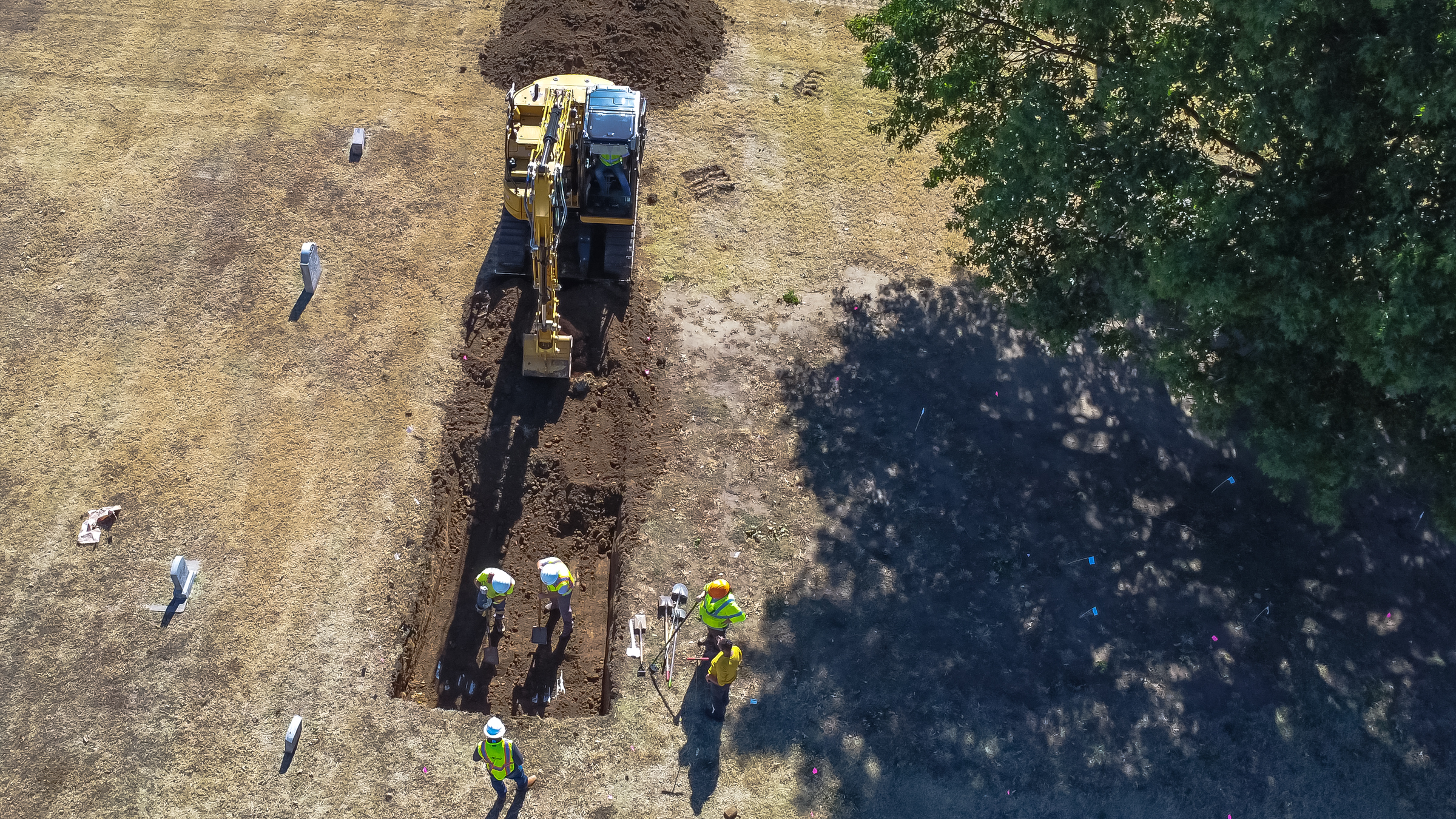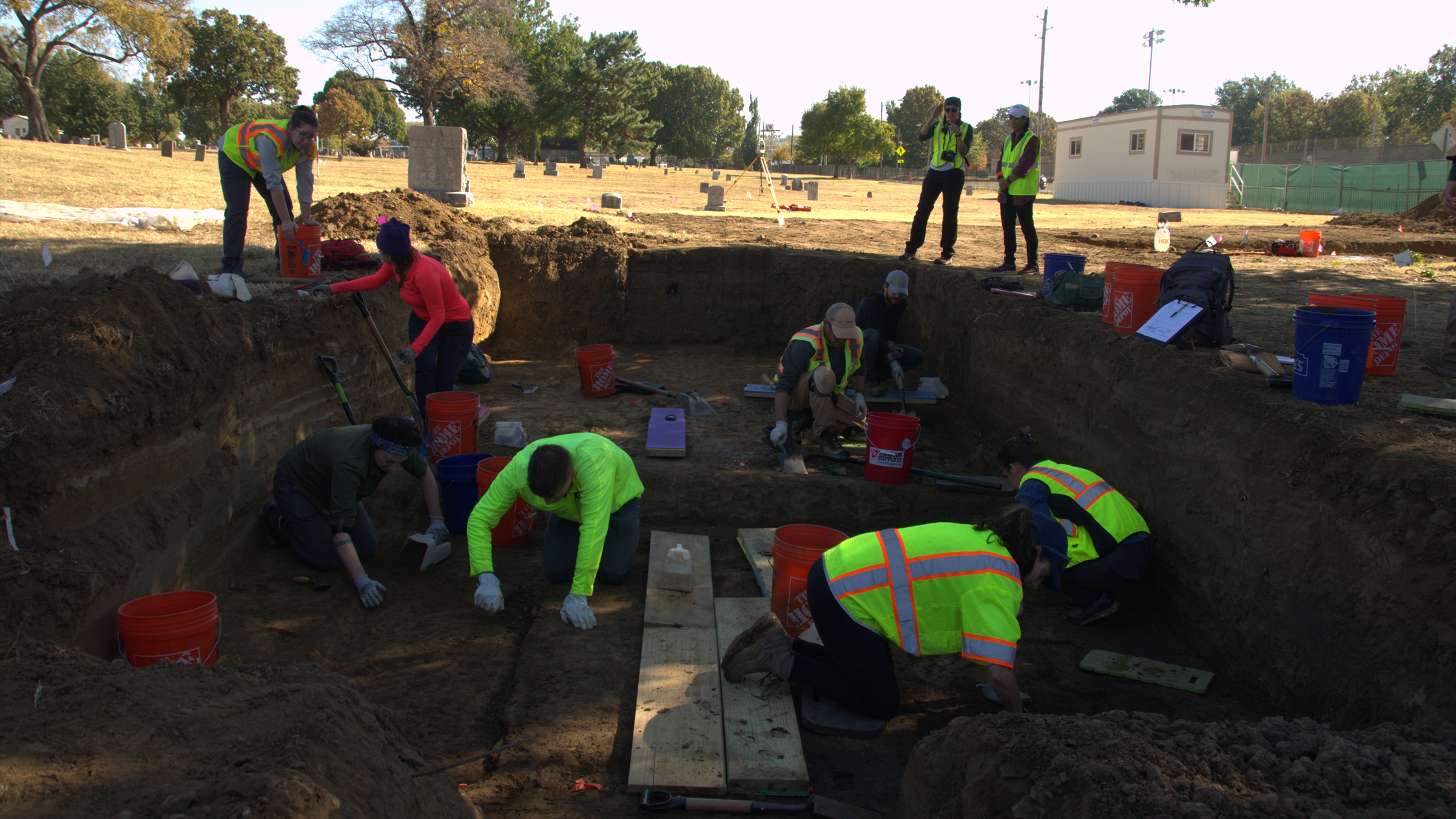24 unmarked graves might belong to victims of 1921 Tulsa Race Massacre
Another 24 unmarked graves — possibly victims of a race massacre in 1921 in Tulsa, Oklahoma — have been discovered in a cemetery in the city.
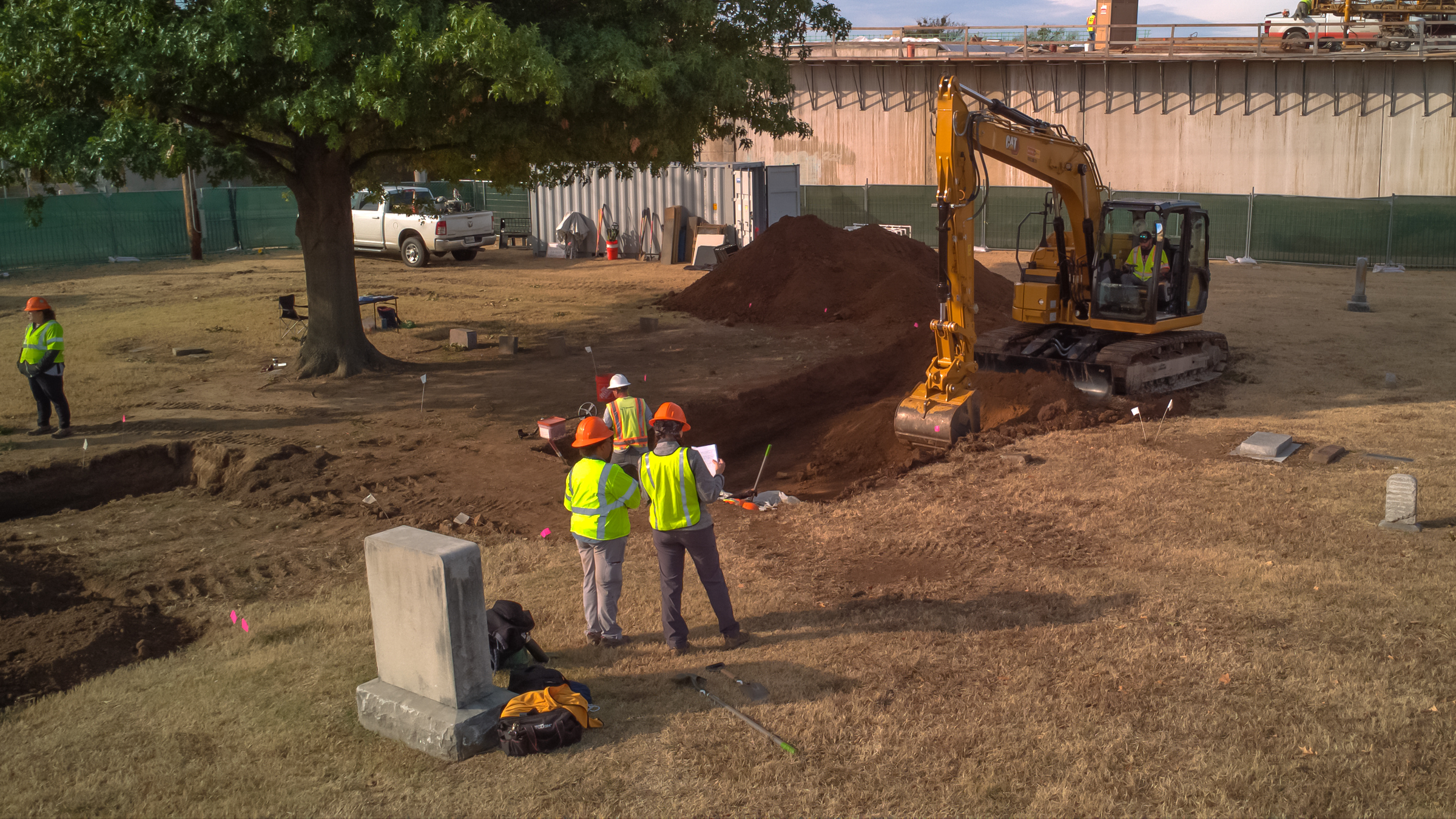
Another 24 unmarked graves, possibly holding victims of the 1921 Tulsa Race Massacre in Oklahoma, have been discovered in a cemetery in the city, according to an update from the state archaeologist.
The newly found burials bring the total of unmarked graves discovered in the Oaklawn Cemetery in the city to more than 40, and investigators suspect there may be many more. Up to 300 people were killed in the outbreak of racial violence, according to modern estimates — most of whom were Black; however, reports from the time likely downplayed the severity of the conflict.
Oklahoma's state archaeologist, Kary Stackelbeck, said the latest excavations included 12 adult graves in one trench and five more in another. An additional three burials were in small coffins and appear to have been of children.
Those graves will now be investigated by hand to learn more about the coffins they contain; this will influence which ones will be exhumed, she said in an online video.
The researchers are making a photogrammetric model — a technique that uses digital photography to create a detailed three-dimensional rendering — of each grave before removing anything; and any human remains they decide to take to a forensic laboratory for further study will be "stabilized" so they can be transported more safely, she said. Members of the city's Public Oversight Committee and clergy are also overseeing the removals.
Related: Racial bias is baked into algorithms doctors use to guide treatment
"We're trying to do every step of this process as respectfully as possible," Stackelbeck said, adding that the remains will be reburied after the laboratory tests — including DNA analysis — are completed.
Get the world’s most fascinating discoveries delivered straight to your inbox.
The City of Tulsa's 1921 Graves Investigation said in a statement that the latest excavations at the Oaklawn Cemetery started on Oct. 26 and are expected to be completed by Nov. 18.
Race massacre
Oklahoma's state legislature created a commission in 1997 to investigate the 1921 Tulsa Race Massacre, which was sparked by an alleged assault by a young Black man against a young white woman — an accusation that was later dismissed.
Tulsa police arrested the man, named Dick Rowland. Later that day armed mobs of white and Black people clashed outside the courthouse where Rowland was being held; and outbreaks of shooting by both sides flared into a race riot, fed by deep racial tensions between the city's Black and white communities.
By the next morning the prosperous Greenwood neighborhood of the city — known as the "Black Wall Street" because of the many thriving Black-owned businesses there — had been burned down, and up to 300 people had been killed, according to the Tulsa Historical Society.
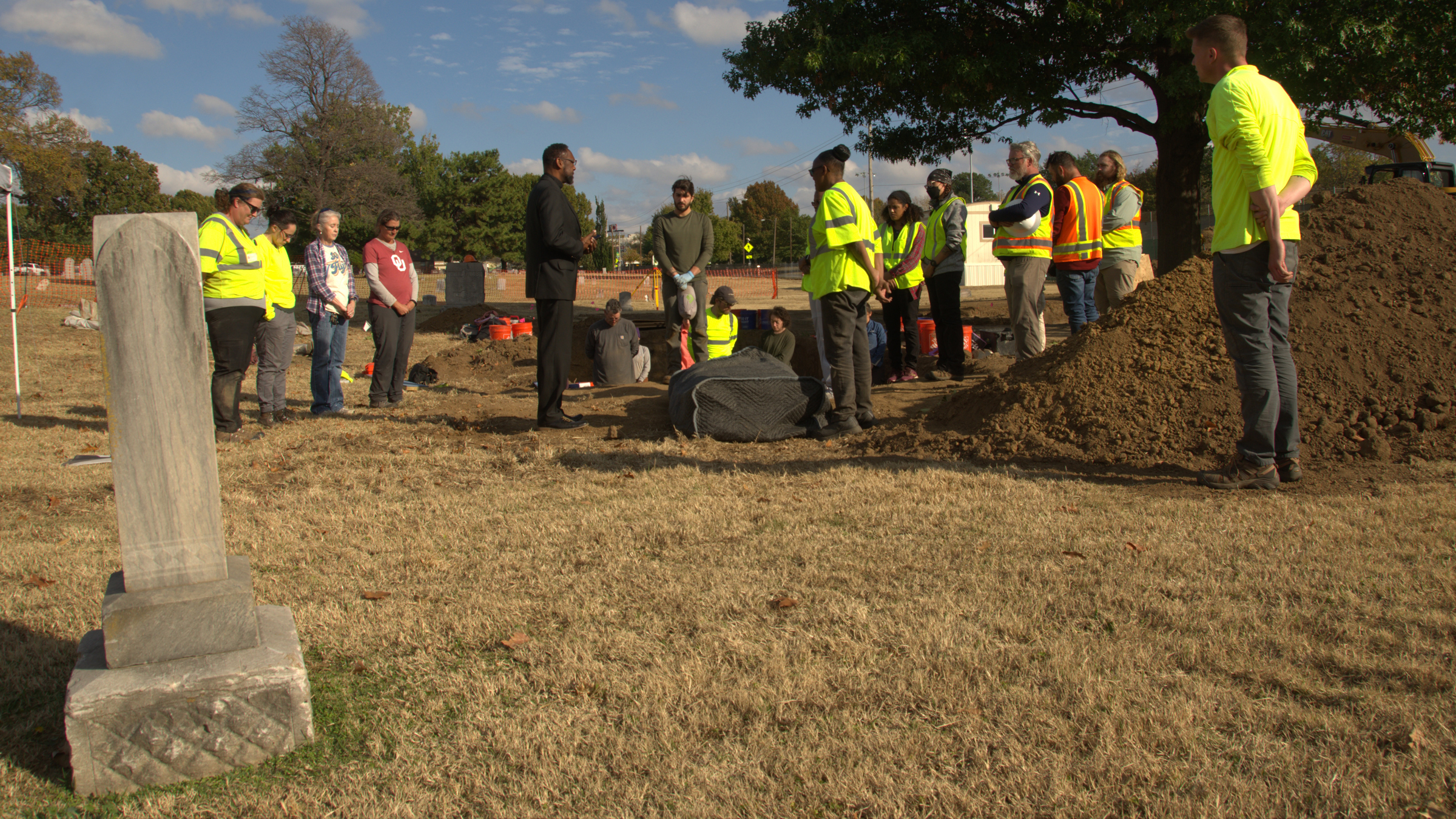
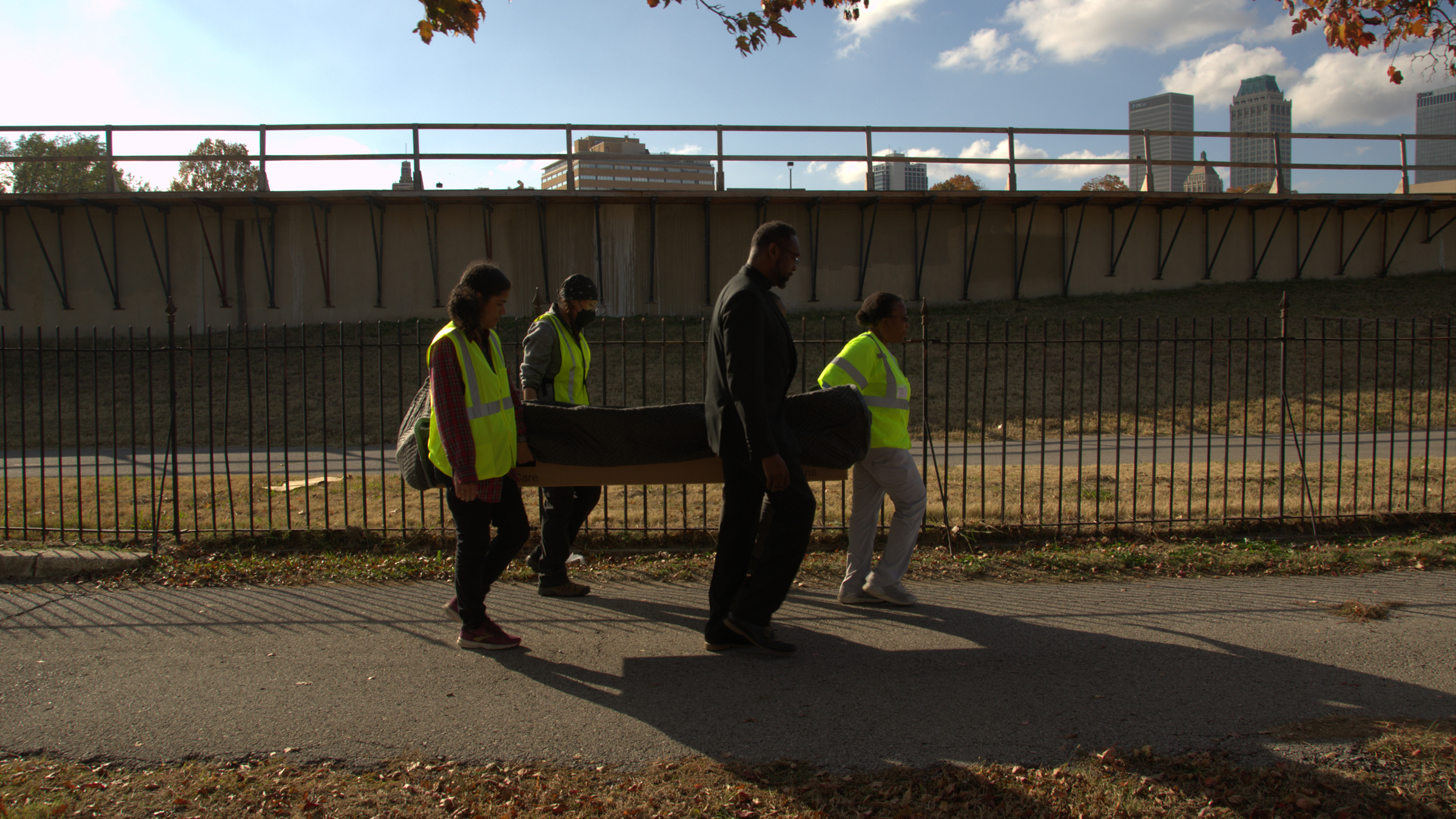

The outbreak of racial violence in Tulsa came soon after the "Red Summer" of 1919, in which white supremacists attacked Black people in several U.S. cities. It's estimated that hundreds of Black people were killed in the unrest, according to the National World War I Museum and Memorial.
In 2001, the Oklahoma State commission formally acknowledged the massacre and recommended restitution be paid to Tulsa's Black community. But the restitution payment and some other recommendations were not made law, according to the Oklahoma statute accepting the report.
The City of Tulsa started investigating the massacre in 2019 ahead of its centenary in 2021; and the investigations have focused on the Oaklawn Cemetery, where possibly hundreds of victims may have been buried in unmarked graves.
The latest discoveries by archaeologists on the project strengthen the idea that many of the massacre victims were buried there in secret.
Ground-penetrating radar scans have been carried out at several locations within the cemetery, indicating what might be a mass grave and several unmarked graves.
Radar scans have also been carried out at an area called The Canes near the Arkansas River in the city, which indicate the ground below the surface there has been disturbed, perhaps during secret burials. The City of Tulsa's investigations into the massacre is ongoing and further excavations are planned.
Tom Metcalfe is a freelance journalist and regular Live Science contributor who is based in London in the United Kingdom. Tom writes mainly about science, space, archaeology, the Earth and the oceans. He has also written for the BBC, NBC News, National Geographic, Scientific American, Air & Space, and many others.


